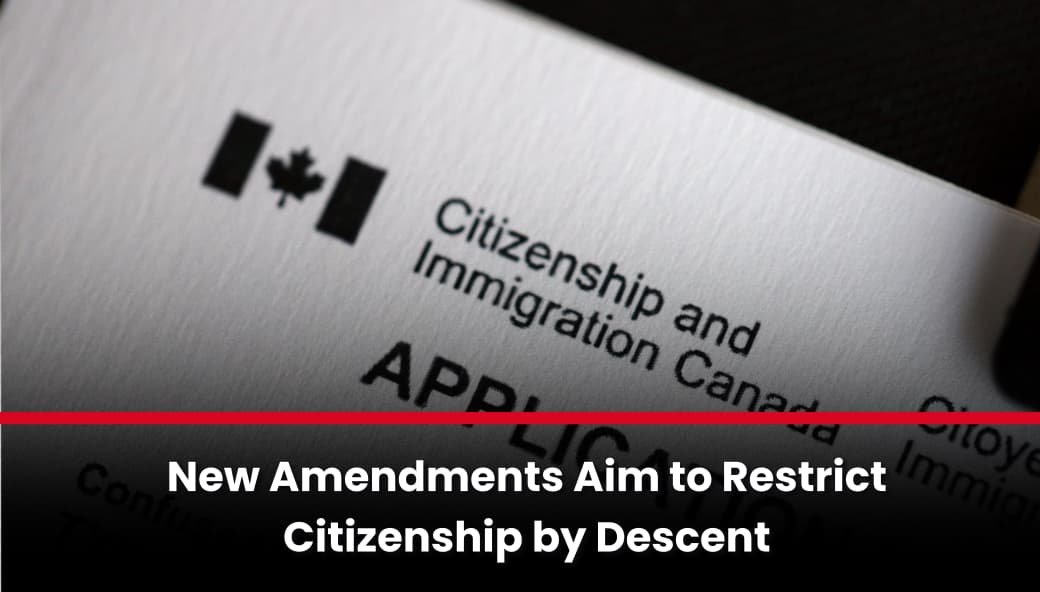Canada’s 13 provincial and territorial premiers are calling for more control over immigration policies, aiming to better respond to labour shortages and local economic needs.
At the recent Council of the Federation summit in Muskoka, Ontario Premier Doug Ford emerged as a vocal proponent of provincial autonomy, unveiling plans for Ontario to issue its own work permits—bypassing federal delays by leveraging constitutional powers.
Book Your Consultation for Canadian Immigration
This marks a potentially transformative shift in Canada’s immigration framework, as provinces argue that they are better equipped to manage local workforce demands and integrate newcomers more efficiently.
Growing Demand for Provincial Authority
During the three-day premiers’ summit, leaders unanimously advocated for increased say over immigration policy. Their argument is rooted in Section 95 of the Canadian Constitution, which allows provinces to legislate on immigration matters, provided their laws do not conflict with federal legislation.
Premiers emphasized that Ottawa’s one-size-fits-all approach often ignores regional economic realities. Recent federal decisions, such as a 50% reduction in Provincial Nominee Program (PNP) allocations, have deepened frustrations. The PNP is vital for attracting skilled workers to provinces like Manitoba, New Brunswick, and Nova Scotia—regions heavily reliant on immigrants to sustain key industries.
Ontario’s Plan: Provincial Work Permits
Doug Ford is spearheading a controversial move to issue Ontario-specific work permits, particularly for asylum seekers awaiting federal approval.
“We have asylum seekers sitting idle in hotels for over two years because they can’t work,” Ford said. “They’re healthy and ready to contribute—we can’t keep waiting.”
While the plan is still in early stages, Ford’s government has started developing legislative and administrative pathways to make it a reality. Alberta Premier Danielle Smith backed the idea, highlighting that Section 95 provides a legal foundation for such action.
If implemented, Ontario’s move could set a precedent for other provinces and redefine how immigration operates across Canada.
Why Provinces Want More Say
The push for immigration autonomy reflects wide-ranging economic and demographic challenges. For example:
- Manitoba: Premier Wab Kinew said cuts to the PNP threaten the province’s ability to staff its manufacturing and service sectors.
- Quebec: Premier François Legault pointed to asylum processing delays—up to three years in Canada compared to three months in France—as a strain on public services and housing.
- Nova Scotia & New Brunswick: These provinces need tailored immigration strategies to attract talent to rural and aging communities.
The premiers argue that provincial control over work permits and economic immigration would allow for quicker integration of newcomers and more responsive economic planning.
Public Opinion and Policy Pressures
Public support for immigration in Canada has declined, driven largely by concerns over housing affordability, healthcare capacity, and social services. Recent polls suggest many Canadians feel immigration levels are too high.
In response, the federal government has introduced the Strong Borders bill, aiming to tighten asylum eligibility and speed up application processing.
However, provincial leaders contend that federal immigration policy remains overly centralized and slow to adapt to regional realities—especially in provinces housing large numbers of asylum seekers who are unable to legally work.
Federal Reaction and Intergovernmental Tensions
The premiers’ proposals have created tension with the federal government. Ford criticized new Immigration Minister Lena Diab, accusing her of not supporting Prime Minister Mark Carney’s apparent openness to provincial autonomy.
Minister Diab’s office defended her track record, noting a recent $3.2 billion investment to support settlement services nationwide (outside Quebec), including language training and credential recognition. Despite these efforts, premiers argue federal funding remains insufficient and too slow to address integration needs.
Economic Case for Decentralized Immigration
Proponents of provincial immigration control argue that localized policies could better fill job gaps, especially in sectors like healthcare, construction, and manufacturing.
Examples include:
- Manitoba: Uses the PNP to staff rural factories and essential services.
- Nova Scotia: Faces workforce challenges due to delayed federal work permits.
- New Brunswick: Needs immigration to offset its aging population.
Allowing provinces to issue work permits could reduce bureaucratic bottlenecks, ease pressure on social services, and allow newcomers to start contributing sooner.
Challenges Ahead
While the premiers’ ambitions are clear, legal and logistical challenges loom.
- Constitutional Limits: Section 95 permits provincial immigration laws, but only if they don’t conflict with federal statutes. Coordinating with Ottawa will be essential.
- Implementation Hurdles: Setting up permit systems and enforcement mechanisms will require significant investment and legal expertise.
- Public Sentiment: Rising anti-immigration rhetoric means provinces must communicate the economic and social benefits of their approach carefully.
Asylum Seekers at the Heart of Ford’s Proposal
Ford has centered his plan around asylum seekers, many of whom are stuck in limbo due to long federal processing times.
“These people want to work, pay taxes, rent apartments, and eventually buy homes,” Ford said. “They want to be part of the community.”
Giving them work permits faster, he argues, would reduce their dependence on government aid and strengthen local economies.
The Road Ahead
The push for immigration autonomy marks a turning point in Canadian policy. If Ontario’s initiative succeeds, other provinces may follow suit—leading to a more decentralized immigration system that better reflects Canada’s regional diversity.
While federal-provincial cooperation remains vital, the premiers’ bold proposals underscore growing demand for localized solutions to national challenges.
Canada’s immigration system is at a crossroads. Whether through collaboration or constitutional leverage, provinces are determined to take a more active role in shaping the country’s economic future.





